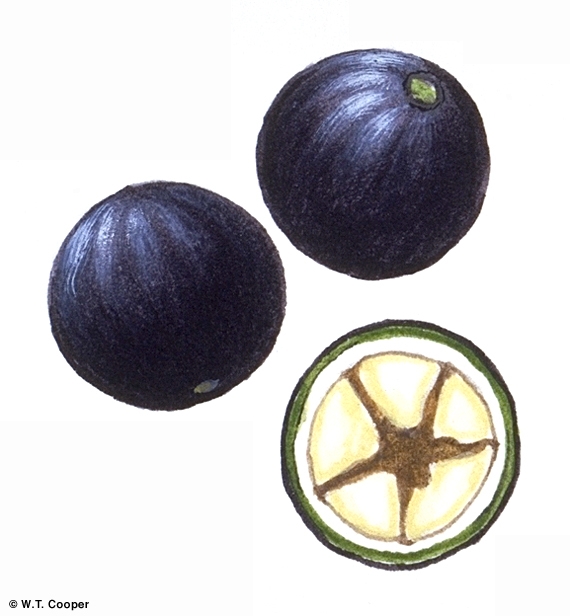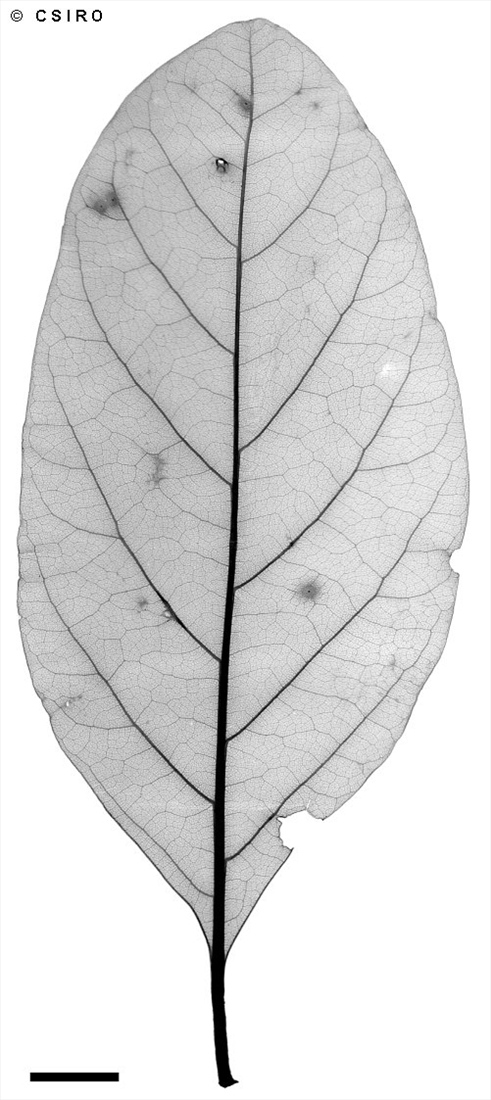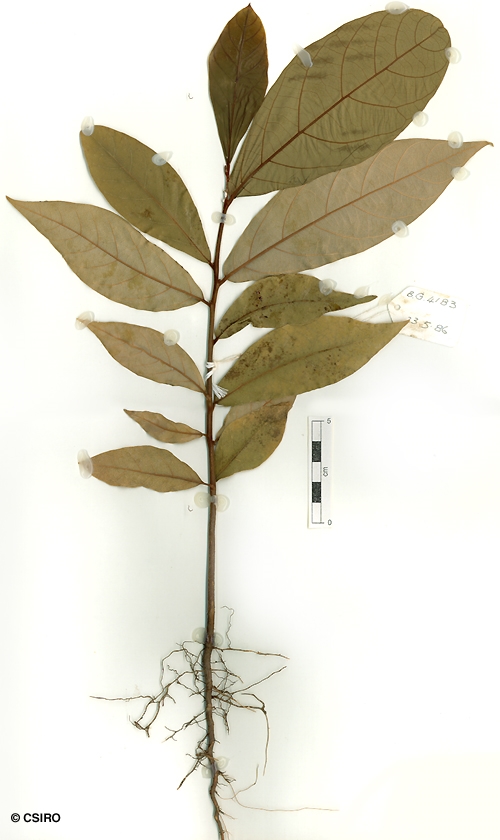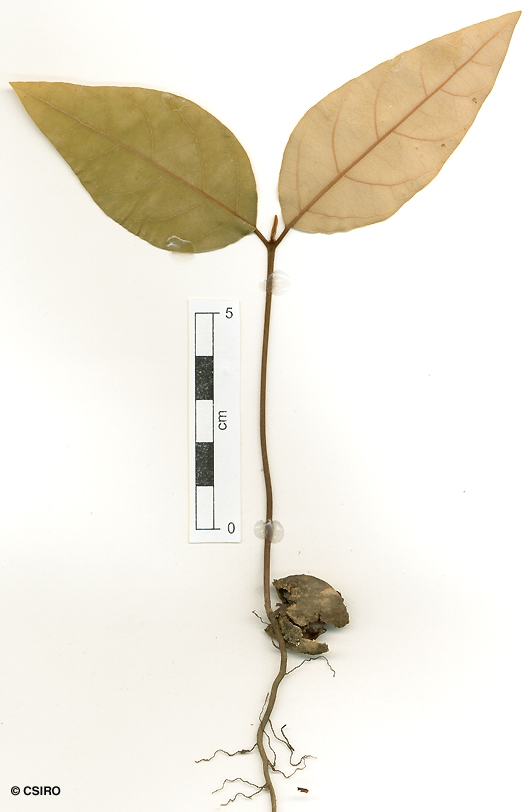Australian Tropical Rainforest Plants - Online edition
Cryptocarya hypospodia F.Muell.







Mueller, F.J.H. von (1865) Fragmenta Phytographiae Australiae 5: 170. Type: In silvis a sinu Rockinghams Bay usque ad flumen Richmonds River.
Spicy odour in the blaze. Yellowish, brittle stripes often visible in the blaze. Lenticels often give the impression of having been forced out of a narrow orifice. A thin cream or pale brown layer generally visible beneath the subrhytidome layer before the first section of the outer blaze.
Twigs fluted, densely clothed in short, tortuous, brown, erect and appressed hairs. Leaf blades about 6.5-24 x 2.5-13.5 cm, green or slightly glaucous on the underside, clothed in short, straight and tortuous, white or pale brown, appressed hairs when young but eventually becoming almost glabrous. Midrib flush with the upper surface. Petioles ridged, flat or channelled on the upper surface. Oil dots just visible with a lens.
Inflorescence paniculate, usually exceeding the leaves. Flowers unpleasantly perfumed. Lower half of the perianth tube glabrous or pubescent on the inner surface. Tepals about 1.4-1.9 mm long, pubescent on the outer surface. Ovary usually glabrous, sometimes pubescent towards the apex, style glabrous or sparsely hairy.
Fruit globular, (rarely pyriform) about 13-18 x 12-17 mm. Cotyledons white or cream.
First pair of leaves ovate to elliptic, about 28-80 x 20-38 mm, glaucous on the underside. At the tenth leaf stage: leaf blade slightly glaucous on the underside; oil dots very small, visible only with a lens. Terminal bud, stem and petiole densely covered in short brown hairs. Seed germination time 15 to 68 days.
Occurs in NT, CYP, NEQ, CEQ and southwards to south eastern Queensland. Altitudinal range from sea level to 900 m. Grows in well developed rain forest and drier rain forest but particularly common in the gallery forests of CYP and NEQ where its fruits are an important food source for fruit eating birds, particularly pigeons. Also occurs in New Guinea.
Fruit eaten by Cassowaries and Fruit Pigeons. Cooper & Cooper (1994). Food plant for the larval stages of the Blue Triangle, Macleay's Swallowtail, Helenita Blue and Common Oakblue Butterflies. Common & Waterhouse (1981).
This species produces millable logs and the sawn timber is known as Northern Laurel, a useful general purpose timber. Wood specific gravity 0.60-0.68. Hyland (1989).





